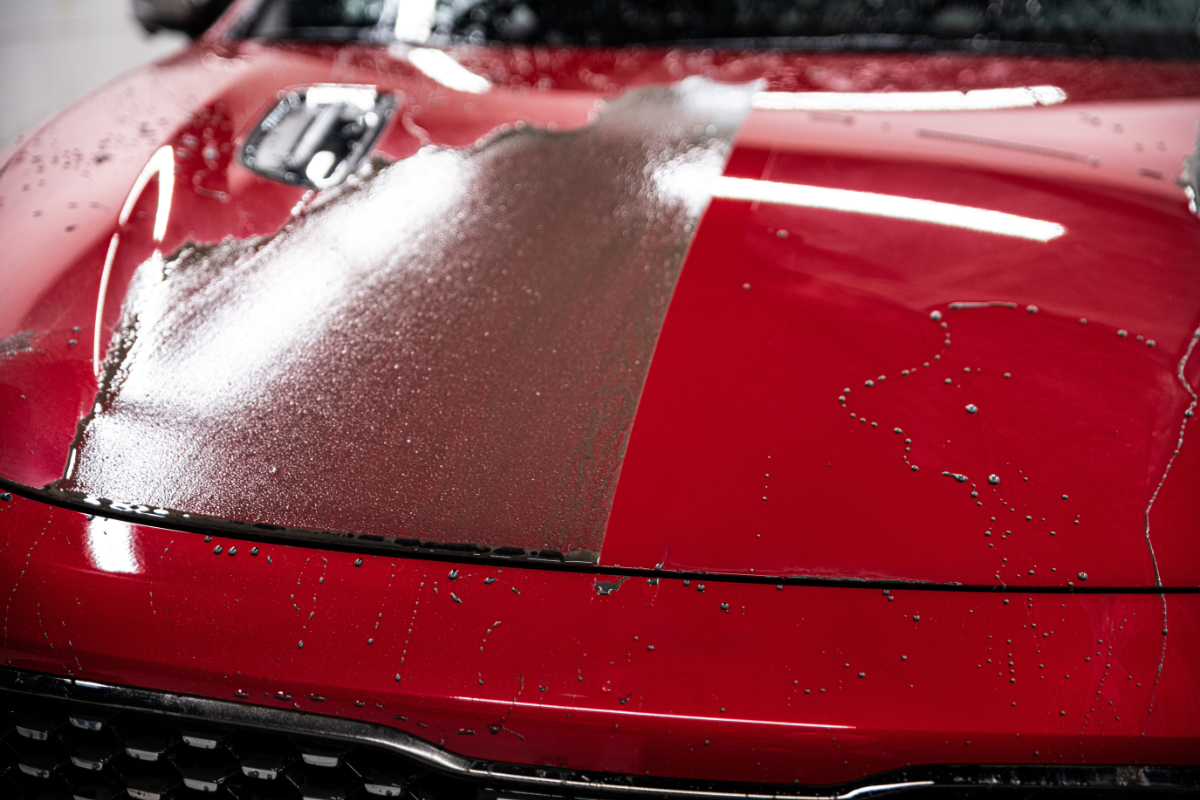The Function of Ceramic Coating in Enhancing Your Cars and truck's Resale Worth
The Function of Ceramic Coating in Enhancing Your Cars and truck's Resale Worth
Blog Article
The Value of Ceramic Coating: Securing Your Cars and truck's Exterior With Accuracy
In a period where preserving the visual and useful honesty of your car is extremely important, ceramic covering becomes an essential remedy. This protective layer not just defend against ecological hardships but additionally elevates the aesthetic allure of your cars and truck. With its distinct bonding residential properties, ceramic covering supplies a degree of security that much surpasses typical waxing techniques. Just how exactly does it attain such remarkable outcomes? As we check out the subtleties of its application and compare it to other choices, one can not question yet help regarding the specifics that make this technology vital for modern vehicle treatment.
Benefits of Ceramic Coating
When it comes to preserving an automobile's aesthetic appeal, ceramic coating provides significant advantages. By forming a semi-permanent bond with the vehicle's paint, ceramic coverings successfully stop oxidation and fading, making sure that the cars and truck preserves a glossy, showroom-like coating for a prolonged period.
In addition to its protective top qualities, ceramic finishing provides remarkable hydrophobic properties, creating water and other fluids to grain off effortlessly. This attribute streamlines the cleaning procedure, as dust and particles are less most likely to stick to the surface, lowering the regularity and effort needed for maintenance. Furthermore, the covering's resistance to chemical discolorations from acidic pollutants like bird droppings and tree sap is an additional notable advantage, reducing potential paint damages.
Ceramic coverings also boost scrape resistance, providing a layer that can take in small abrasions and swirl marks. This feature is especially helpful in preserving an excellent surface area, reducing the possibility of noticeable imperfections and protecting the honesty of the vehicle's paintwork with time.

How Ceramic Finish Works
Comprehending the mechanics behind ceramic finish discloses its efficacy as a protective service for automobiles. Ceramic coatings are essentially liquid polymer applications that chemically bond with a car's factory paint, creating a protective layer. This layer works as an obstacle versus ecological impurities such as crud, ultraviolet, and dust rays, which can weaken a vehicle's exterior in time. The essential element in ceramic covering is silicon dioxide (SiO2), which stems from quartz crystals and is understood for its outstanding firmness and toughness.
Application of ceramic finish involves a thorough procedure. This shield boosts the vehicle's gloss and hydrophobic properties, assisting in easier cleaning by creating water and contaminants to grain and slide off effortlessly.
Furthermore, the coating's molecular structure offers resistance to small scratches and chemical spots. Unlike waxes or sealers that sit on top of the paint, ceramic finishes incorporate with the surface area, providing durable defense. This assimilation is fundamental to its efficiency, making certain the automobile's coating remains beautiful for many years.
Contrasting Ceramic Coating to Alternatives
In the world of automotive protection, ceramic coating stands as an awesome choice when contrasted to traditional alternatives such as sealants and waxes. While waxes provide a short-term shiny coating, commonly lasting just a couple of weeks to months, ceramic coverings offer a longer-lasting solution, usually withstanding for several years. This toughness is attributed to the chemical bonding that happens when ceramic finishings are used, developing a solid layer that is resistant to environmental dangers.
Contrastingly, sealers, although more resilient than waxes, still fall brief of the durable protection offered by ceramic coatings. Sealers can normally last for approximately a year, giving an artificial shield versus specific aspects. However, they do not have the exceptional hydrophobic residential properties and UV security that ceramic finishes provide.
Moreover, ceramic finishings supply boosted scratch resistance, which neither waxes neither sealers can effectively match. In summary, while conventional waxes and sealers offer fundamental security, ceramic layers present an extensive, long-term option that dramatically maintains the vehicle and enhances's outside finish.
Application Process Discussed
Using ceramic finish to a lorry calls for a precise procedure to make certain optimum outcomes and durability. The initial step entails thoroughly cleaning the car's surface to remove dirt, oil, and previous waxes. This is vital for making sure the coating sticks effectively. A pH-neutral hair shampoo and a clay bar therapy are usually made use of to accomplish a beautiful surface. Once cleaned, the vehicle is dried out and brightened to get rid of any imperfections, as any kind of existing scrapes or swirls can become more obvious after the layer is used.
Adhering to surface prep work, the application of the ceramic covering starts. Making use of an applicator pad, the ceramic finishing is used in little areas to guarantee also insurance coverage.
After application, the finishing calls for a specific curing period, during which the automobile needs to be protected from water and impurities. This curing procedure can vary depending upon the item yet generally ranges from 24 to two days. Inevitably, this in-depth procedure is pivotal in accomplishing a shiny and durable surface.
Upkeep Tips for Long Life
To keep the long life of a ceramic covering, adherence to a regimented maintenance routine is vital. Normal washing is paramount; make use of a pH-neutral cars and truck shampoo and soft microfiber mitts to prevent abrasions. Prevent automatic cars and truck cleans, as their extreme brushes can endanger the layer's integrity. Instead, select a hand wash to ensure complete yet gentle cleansing.
Post-wash, drying the lorry with a tidy microfiber towel stops water areas that may weaken the finishing gradually. Furthermore, apply a ceramic layer booster every couple of months. These boosters strengthen the hydrophobic properties and boost the finishing's protective capacities, guaranteeing it remains reliable against contaminants.
Bear in mind that car park places play an essential duty in upkeep. ceramic coating. Whenever possible, park in shaded locations to minimize UV direct exposure, which can slowly weaken the layer. For Homepage long-lasting storage space, think about using a car cover for included protection versus environmental aspects
Conclusion
In conclusion, ceramic finish offers as an essential protective layer for automobile useful source outsides, using durable protection against environmental elements such as uv, crud, and dust rays. Recognizing the application process and sticking to upkeep suggestions are crucial for making the most of the durability and efficiency of ceramic finish.
When it comes to maintaining a vehicle's aesthetic allure, ceramic layer supplies substantial benefits. By developing a semi-permanent bond with the automobile's paint, ceramic finishes successfully avoid oxidation and fading, guaranteeing that the vehicle maintains a glossy, showroom-like coating for an extensive period. Ceramic coverings are essentially fluid polymer applications that chemically bond with a vehicle's manufacturing facility paint, creating a safety layer. In summary, while standard waxes and sealers use fundamental defense, ceramic finishes provide an extensive, long-term service that dramatically maintains the automobile and boosts's exterior surface.

Report this page